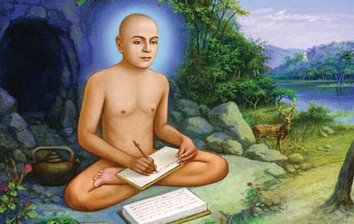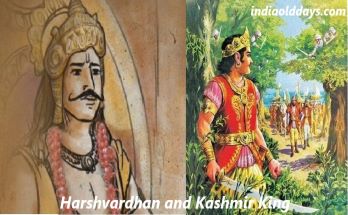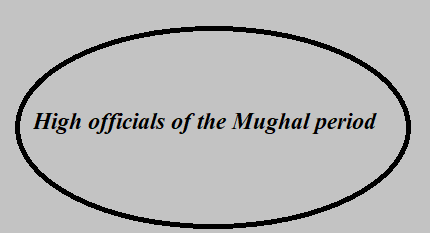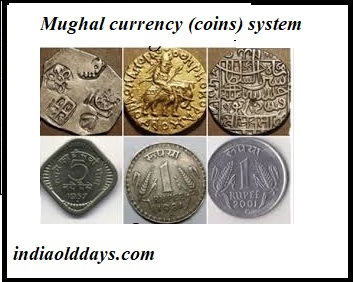Harshvardhan Victories
Harsh received the news of the murder of his elder brother Rajyavardhan by the Gaun ruler, Shashank, from an horseman named Kuntal. Here, the catalytic word of Commander Singhnad added courage and vigor to it. Harsh soon prepared an army set out for war.
Harsh pledged before leaving- If within a few days I do not make the earth devoid of Gaun by filling the feet of all the emancipated kings in boasting of the agility of bow bowling, then I will burn myself like a kite in a blazing fire with ghee.
Similarly, through his war secretary Avanti, warning other independent kings and feudatories, he announced that all the rulers till Udayachal in the east, Asthachal in the west, Gandamadan in the north and Trikut in the south were either to pay taxes or Then get ready for war. He then ordered his Gaj army hero Skandagupt to call back a group of elephants, who left the pasture and traveled to Digvijay.
Banabhatta has given a very interesting description of Harsh’s victory journey in Harshacharit. According to Harshacharit, Harsh’s army used to cover a distance of 8 miles per day. After the first day’s visit, Harsh was sent by the king of Kamarup Bhaskaravarma, a messenger named Hansbeg, who came with precious gifts, taking the offer of friendship. Harsh accepted the offer and accepted the gift. This treaty was made against the Gaun King Shashank. Shashank was an enemy of both Bhaskaravarma and Harsha.
After this the army departed further. The army was moving at the same pace without stopping. One day a letterman informed Harsh that Bhandi came with the entire army of Malvaraj and stayed in the nearby Shivar. It seems that after defeating Devagupt and killing Rajyavardhan himself, he sent a part of his army to Thaneshwar and to save his sister Rajyashree, he traveled towards Kannauj.
On receiving information about Harsh, Bhandi himself reached his camp and he informed Harsha about Rajyavardhan being killed. Along with this, it is also told that a person named Gupta took possession of Kanyakubj and Rajyashree ran away from the state prison to be suttee in the jungles. The soldiers sent to find him have also not returned.
Harsh was very sad to know about Rajyashree and was forced to change her action plan. He ordered Bhandi to take an army and attack Shashank and along with Madhavagupt and other soldiers, went towards Vindhyavan in search of Rajyashree. Arriving here, he met Vyaghraketu, the son of a feudal lord, Sharabhaketu, who brought with him a young man named Nirghaat, the nephew of the Bhookamp, the lord of the Vindhya region. They took the king to the ashram of a childhood friend of Grahvarma, Buddhist monk Diwakar. With great difficulty, with the help of Diwakra’s friend, he found out Rajyashree – Exactly when she was going to burn the pyre. Harsh explained a lot to her sister that she agreed to give up the idea of self-immolation.
Harsh rescued his sister and returned to the banks of the river Ganga where her army led by Bhandi was awaiting her arrival.
The description of the Harshcharit ends abruptly at this place, Due to which information about further events remains incomplete. What was the result of Harsh’s military campaign against Shashank. Whether or not there was a war between Harsh and Shashank or what happened to Shashank, there are many things about which there Harshchari is delightful silence.
There is a verse mentioned in Aryamanshrimulkalpa, which shows, that a king named ‘H’ (Harsha) went towards eastern India and reached Pundranagar. The evil deed Som(Shashank) was defeated and forced to remain to locked inside his Kingdom. Harsh returned home due to not being welcomed by the gaun.
How far correct or not the occurrence of aryamanshrimulkalp. We cannot say anything about this but it is so clear that Shashank escaped. It seems shashank evacuated Kannauj without fighting.
Following are the reasons why Shashank emptied Kannauj-
- Shashank’s best friend Devgupt had already been killed by Rajyavardhan. Due to which he could no longer get any assistance from Malwa.
- Shashank’s state of Bengal surrounded Bhaskaravarma in the east and Harsh in the west due to the friendship between Harsh and Bhaskaravarma.
Troubled by all these adversity, the subordinate King Shashank evacuated Kannauj without fighting with pleasure, and Kannauj became independent. The ministers of Kannauj gladly requested that he accept the throne of Kannauj, but Harsh did not accept it.
Hiuensang has written that Harsh consulted Avalokiteshvara Bodhisattva. The Bodhisattva forbade him to sit on the throne and hold the title of Maharaj.
Harsh called himself Rajputra and kept his surname Shiladitya. Rajyashree is considered to be the ruler, who accepted to govern under the supervision of his brother Harsh.
According to Chinese sources, Harsh and Rajyashree used to sit on the throne of Kannauj together. Harsh transferred his capital from Thaneshwar to Kannauj, so that he could assist Rajyashree in administrative work.
In the absence of evidence, we cannot accurately ascertain Harsh’s further campaigns, etc. Nevertheless, scholars like Hieunsang have said something about their style, which is described as follows-
Huensang wrote that Harsh fought with a large army for 6 consecutive years. First he departed towards the east and subjugated the powers who did not believe in his subjection. Even after this, he kept fighting until he became the lord of Panchabharata. He has called Panchabharata in-tu. After this, he stopped fighting. The Astra-Arms were deposited in the Arsenals and ruled the kingdom peacefully for thirty consecutive years. Meanwhile, Harsh did not wage any war.
Some scholars have divided the reign of Harsha into two parts –
- Wartime(606-612 AD)-During this period, Harsh had fought many wars.
- Peace time(612-642 AD)-Harsh ruled peacefully during this period.
It seems that after taking over Kannauj, Harsh made the first eastern expedition, In which he won all of Uttar Pradesh and western part of Bihar. But Shashank’s state, which included the states of Magadh, Bengal and Orissa, He could not have won in the first campaign. At about the same time, Harsha would have acquired authority over Malwa. These wars must have taken six years (606–612 AD) after his ascension.
After 612 AD, in terms of chronology, Harsh would have fought the following wars:
War of Balbhee
Balbhee state was located in modern Gujarat. The ruler there was Dhruvasen II. Harsh attacked him…For More Information.
War with Sindh
Huensang’s description shows, that the king of Sindh country was a Shudra from the caste and he had faith in Buddhism. Here Harsh followed the policy of the religious ruler, which is similar to Samudragupt’s policy of Dakshinapath. It seems that Harsh was satisfied with his meeting and returned her kingdom…..For More Information.
War with Pulakeshin II
According to Hsuansang’s travel description, Si-yu-ki, after his ascension, Harsh waged many wars for 6 consecutive years. He defeated many powers. But Mo-Ho-L-Ch-A means the ruler of Maharashtra was brave and self-respecting. He did not obey Harsh. The king whom the Chinese traveler has mentioned here, It shows him that Pulakeshin II is the king…..For More Information.
Second Eastern military campaign
The article of Shashank’s feudatory Shailodbhavanshi Madhavraj from Ganjaam district of Orissa is found. The date of which is Gupta Samvat 300 (619 AD). This suggests that up to this date, he was ruling as an independent ruler with the title of Maharajadhiraj…..For More Information.
Harsh and Nepal
Harsh conquered Nepal, according to Radhakumud Mukarjee, there was a trend of Harsh Samvat in Nepal, who gives notice of his suzerainty there…..For More Information.
State of kashmir
On this, Kashmir King himself meditated and turned the tooth in front of Harsh. On seeing him, Shiladitya i.e. Harsh became reverential, and using force, took the tooth with him…..For More Information.
Harsh and Kamrup
Bhaskaravarma sent him saying that he would prefer to give his head in exchange for a Chinese traveler. Harsh was furious at this and asked to send his head immediately…..For More Information.
Harsh and South India
Harsh carried out a military campaign south of the Narmada River. Conquered Kuntal, Chola, Kanchi in the southern part of the Narmada River. This campaign of Harsh happened after the death of Pulakeshin II i.e. around 643 AD. In this campaign he took the Cholas and Pallava kings under his control…..For More Information.
Reference : https://www.indiaolddays.com





